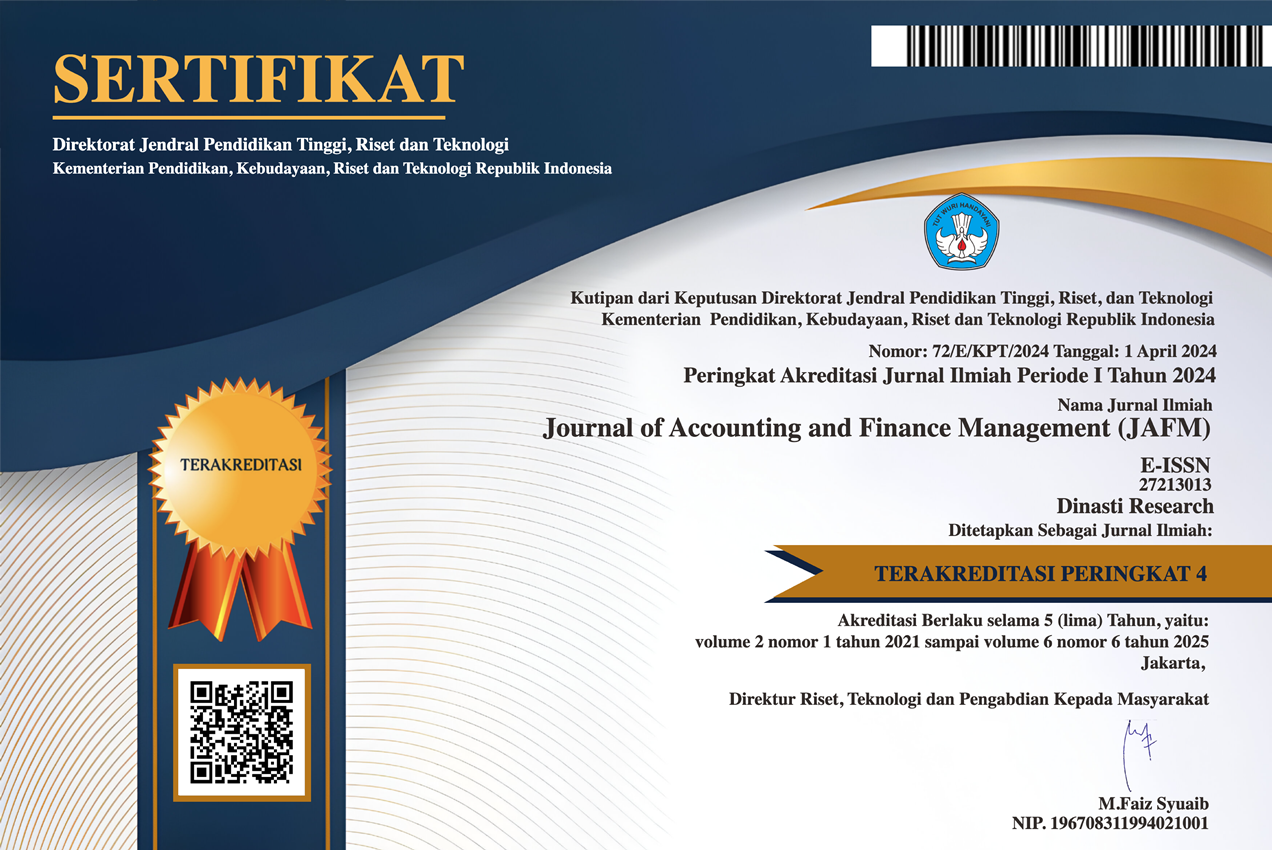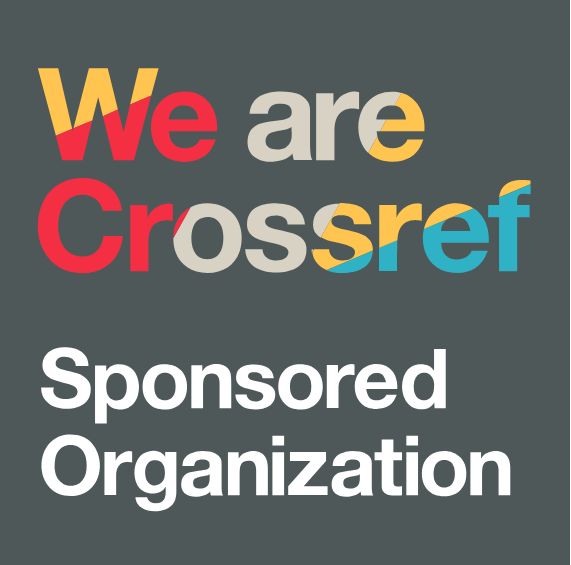The Influence of Good Corporate Governance and Asset Management on Financial Performance with ERP (Enterprise Resource Planning) as a Mediating Variable in the Construction Subsector in Indonesia in 2023
DOI:
https://doi.org/10.38035/jafm.v6i1.1614Keywords:
Good Corporate Governance, Asset Management, Financial Performance, Enterprise Resource PlanningAbstract
The aim of this research is to determine the influence of good corporate governance and asset management on financial performance with ERP (enterprise resource planning) as mediation variable in construction subsector in Indonesia in 2023. The object of this research is all company in construction subsector in Indonesia. The objectives are, (1) To determine the influence of Good Corporate Governance (GCG) on Enterprise Resource Planning (ERP), (2) To determine the influence of Asset Management on Enterprise Resource Planning (ERP), (3) To determine the effect of Enterprise Resource Planning (ERP) on Financial Performance. (4) To determine the influence of Good Corporate Governance (GCG) on financial performance both directly and indirectly through ERP as a mediating variable, and (5) To determine the influence of Asset Management on financial performance both directly and indirectly through ERP as a mediating variable. The methodology used in this research is descriptive statistical analysis, path analysis, and chi square analysis. And result of this research is Good Corporate Governance (GCG) has a significant influence on Enterprise Resource Planning (ERP) with a direct influence of 73.2%. ERP itself has a significant influence on Financial Performance, with a value of 1.570 and a significance of 0.043, and a direct influence of 246%. Meanwhile, GCG does not have a direct influence on Financial Performance, but through ERP as a mediating variable with an indirect influence of 134%. This shows that ERP fully mediates the relationship between GCG and Financial Performance.
References
Agresti, A. (2018). An Introduction to Categorical Data Analysis (3rd ed.). Wiley.
Barry, D. M., Campbell, J. D., Jardine, A. K. S., & McGlynn, J. (2024). Asset Management Excellence: Optimizing Equipment Life-Cycle Decisions.
Gillan, S. L., & Starks, L. T. (2019). Corporate governance, corporate ownership, and the role of institutional investors.
Ghozali, I. (2017). Aplikasi Analisis Multivariate dengan Program IBM SPSS 23. Semarang: Badan Penerbit Universitas Diponegoro.
Hatane, S. E., Supangat, S., Tarigan, J., & Jie, F. (2019). Does internal corporate governance mechanism control firm risk? Evidence from Indonesia’s three high-risk sectors. Corporate Governance (Bingley), 19(6), 1362–1376. https://doi.org/10.1108/CG-02-2019-0071
Jabnabillah, M. (2022). Analisis Korelasi Pearson dalam Menentukan Hubungan antara Motivasi Belajar dengan Kemandirian Belajar pada Pembelajaran Daring.
Kline, R. B. (2015). Principles and Practice of Structural Equation Modeling. New York: Guilford Press.
Latan, H., & Ghozali, I. (2012). Partial Least Squares: Konsep, Teknik dan Aplikasi. Semarang: Universitas Diponegoro.
Li, X., Zhang, Y., Wang, Z., & Chen, H. (2020). The combined effect of corporate governance and ERP adoption on financial performance in construction firms.
Mahrani, M., & Soewarno, N. (2018). The effect of good corporate governance mechanism and corporate social responsibility on financial performance with earnings management as mediating variable. Asian Journal of Accounting Research, 3(1), 41–60.
Mastutik, N. S. (2024). Peningkatan Kinerja Pegawai di PT Sunwoo Garment Indonesia melalui Disiplin Kerja, Kepemimpinan, dan Lingkungan Kerja.
Pasaribu, B., Herawati, A., Kabul Wahyu, U., Aji, RHS., (2022). Metedologi Penelitian, Untuk Ekonomi dan Bisnis, Jakarta: Media Edu Pustaka
RedERP. (2022). Sistem ERP: Pengertian, Jenis dan Manfaatnya untuk Bisnis. Retrieved Oktober 25, 2024, from https://rederp.co.id/blog/apa-itu-erp/#pengertian
Sisfo Inspirasi Profesional Sistem Informasi. Sandfreni, S. (2017). Sistem Informasi. Retrieved November 10, 2024, from https://elib.its.ac.id/jurnal/jurnalsisfo/submit/index.php/sisfo/article/view/25
Downloads
Published
How to Cite
Issue
Section
License
Copyright (c) 2025 Yustina Ismi Rahmawati, Aty Herawati

This work is licensed under a Creative Commons Attribution 4.0 International License.
Authors who publish their manuscripts in this journal agree to the following conditions:
- The copyright on each article belongs to the author(s).
- The author acknowledges that the Journal of Accounting and Finance Management (JAFM) has the right to be the first to publish with a Creative Commons Attribution 4.0 International license (Attribution 4.0 International (CC BY 4.0).
- Authors can submit articles separately, arrange for the non-exclusive distribution of manuscripts that have been published in this journal into other versions (e.g., sent to the author's institutional repository, publication into books, etc.), by acknowledging that the manuscript has been published for the first time in the Journal of Accounting and Finance Management (JAFM).



























